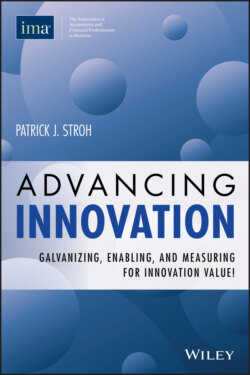Читать книгу Advancing Innovation - Patrick J. Stroh - Страница 8
На сайте Литреса книга снята с продажи.
Introduction
ОглавлениеThe greatest danger for most of us is not that our aim is too high and we miss it, but that it is too low and we reach it.
—Michelangelo
Everyone talks about “it”—Innovation. We all talk about its significance, how we have it, and how we are striving for more of it. It has become a rather maligned term that means many different things to people. One similarity, though, is that everyone wants innovation in their company and wants to be seen in their market space and by their customers as innovative leaders. Yet the nature of innovation, its substance, is very vague—or at least, very different depending on the context, industry, or landscape.
Even when we can agree on what innovation is, we have no standard way to measure its results. How can you say you are innovative or a leader in innovation if you can’t measure innovation? If you can’t measure innovation in a comparable way against others, it’s hard to know who is innovative and who is just talking platitudes. Being “innovative” is akin to the term “strategic.” We all want people to see us and our businesses as strategic, we know we need to be strategic to be successful, and constituents ask us about how our strategic efforts are playing out. And similar to innovation, there are a ton of different yardsticks on how to measure—and even define—being strategic.
By picking up this book and beginning to read, I hope you agree that the topic of innovation is worthy of your time and critical thinking. Let’s start with a basic hypothesis of what innovation is and have a meaningful discussion around innovation that is relevant, consistent, value-based, meaningful, important, and that creates real value for customers and stakeholders! In its simplest form, I believe innovation is about this last factor—creating real value for customers and stakeholders.
